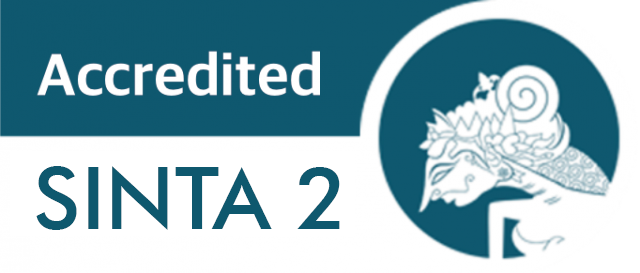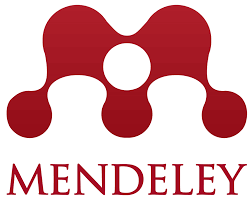Integration Science and Religion: An Analysis in Islamic Higher Education
DOI:
https://doi.org/10.15408/tjems.v5i1.9508Keywords:
Integration, information literacy, physics, qur’an, verses, Integrasi, literasi informasi, fisika, ayat-ayat al-quranAbstract
Abstract
The integration of Islamic values in the learning process at UIN Sunan Gunung Djati Bandung has become the hallmark of the campus. The Islamic values integrated into the learning process by providing the verses from the Quran for the concepts studied. This study aims to analyze the ability of students used to live in an Islamic boarding school (pesantren) and those who haven’t yet live in an Islamic boarding school in identifying the verses of al-Quran related to some concept of physics. The research was conducted through observation in classrooms and analysis of students’ assignment on identifying. The results showed that generally, students have a decent ability in identifying Qur'anic verses related to the concept of physics. The students' ability appeared not to be influenced by the pesantren educational background. However, largely students are not able to interpret the verses of the Qur'an related to the physics concept in depth.
Abstrak
Integrasi nilai-nilai Islam dalam proses pembelajaran di UIN Sunan Gunung Djati Bandung telah menjadi ciri khas kampus. Integrasi nilai-nilai Islam ke dalam proses pembelajaran dapat dilakukan dengan menghubungkan ayat-ayat al-Quran dengan konsep-konsep yang dipelajari. Penelitian ini bertujuan untuk menganalisis kemampuan mahasiswa Prodi Pendidikan Fisika yang pernah tinggal di pesantren dan yang tidak pernah tinggal di pesantren dalam mengidentifikasi ayat-ayat al-Quran terkait dengan konsep fisika. Penelitian dilakukan melalui observasi di ruang kelas dan analisis tugas yang dikumpulkan dari mahasiswa ketika mengidentifikasi ayat-ayat Al-Qur'an yang berkaitan dengan konsep fisika. Hasil penelitian menunjukkan umumnya mahasiswa memiliki kemampuan yang layak dalam mengidentifikasi ayat-ayat Al-Qur'an yang berkaitan dengan konsep fisika. Kemampuan mahasiswa tersebut tidak dipengaruhi oleh latar belakang pendidikan di pesantren. Namun, sebagian besar mahasiswa tidak mampu menafsirkan ayat-ayat Al Qur'an yang terkait dengan konsep fisika secara mendalam.
How to Cite : Nuryantini, A. Y.. Karman., Holik, A. (2018). Integration Science and Religion in Physic Subject: An Analysis in Islamic Higher Education. TARBIYA: Journal of Education in Muslim Society, 5(1), 11-18. doi:10.15408/tjems.v5i1.9508.
References
Ananiadou, K., & Claro, M. (2009). 21st Century skills and competences for new millennium learners in OECD countries. Paris: OECD Education Working Papers, No. 41, OECD Publishing. doi:doi:dx.doi.org/10.1787/218525261154, 2009.
Baiquni, A. (1997). Al-Qur’an dan Ilmu Pengetahuan Kealaman . Yogyakarta : PT. Dana Bakti Prima Yasa.
Blummer, B., & Kenton, J. M. (2018). Academic libraries and student learning outcomes. Performance Measurement and Metrics, 19 (1), 75-87. Retrieved from https://doi.org/10.1108/PMM-11-2017-0053.
Fakhri, J. (2010). Sains dan teknologi dalam Al-Quran dan implikasinya dalam pembelajaran. Ta’Dib, X(01).
Hafidz Ibnu Katsir Ad-dimasyqy, A. F. (2006). Tafsir Ibnu Katsir, Juz II . Bairut : Darul Kutub Ilmiyah.
Hodgson, M. G. (1977). The venture of Islam. Chicago and London: The Uniersity of Chicago Press.
Ibrahim, Yusoff, N., & Awang, I. (2016). Teachers ability to identify islamic values in learning science – biology. Proceedings of the 1st English Education International Conference (EEIC) in conjunction with the 2nd Reciprocal Graduate Research Symposium, (pp. 483-486). Banda Aceh, Indonesia.
Iqbal, M. (2009). Why does ice float on the surface of water? Islam and Science, 17(1).
Iqbal, M. (2011). Teaching science from an Islam perspective. Islam and Science, 9(1).
Johari, N., Mustaffha, N., & Deni, M. I. (2016). Integration of Islamic values in accounting education: Accounting academician perspectives. e-Jurnal Penyelidikan dan Inovasi Vol. III, No. I, 2016, III(1), 61-83.
Kementrian Agama (Indonesia), B. P.-Q. (2012). Tafsir ilmi : Seri mengenal ayat-ayat sains dalam Al-Quran . Jakarta: Direktorat Urusan Agama Islam dan Pembinaan Sayariah, Direktorat Jenderal Bimbingan Masyarakat Islam, Kementerian Agama.
Lubis, M. A., Musthapa, R., & Lampoh, A. A. (2009). Integrated Islamic education in Brunai Darussalam: Philoshopical issues and challenges. Journal of Islamic and Arabic Education, 1(2), 51-60.
Lukens-Bull, R. A. ( 2016). The political use of islamic variation in indonesian islamic higher education. Jurnal Pendidikan Islam, Vol.2 (No. 2), 193-207.
Mahally, I. J.-S. ( 1990). Tafsir Jalalain Berikut Asbab An-Nujulnya Jilid I . Bandung: Sinar Baru.
Murad, M. (2012). Inner and outer nature: An Islamic perspective on the environmental crisis. Islam and Science, 10(2).
Nagahama, H. (2014). The development of values education under the integrated learning subjects in the Phillipines. Journal of Education and Learning, 8(2), 152-163.
Parsania, H. (2006). Unseen and visible. Islam and Science, 4(1).
Razi, F. (n.d.). Al-Tafsir al-Kabîr: Mafatih al-Gayb . Teheran : Dâr al-Kutub al-Islâmiyyah.
Setia, A. (2008). Time motion distance and change in the kalam of Fakhr al-din ar-razi: a preliminary survey with special reference to the matalib aliyyah. Islam and Science, 6(1).
Shihab, M. Q. (2003). Tafsir al-Mishbah: Pesan, Kesan dan Keserasian al-Qur'an . Jakarta: Lentera Hati.
Shihab, M. Q. (2013). Kaidah tafsir, syarat, ketentuan, dan aturan yang patut anda ketahui dalam memahami ayat-ayat Al-Quran. Tanggerang: Lentara Hati.
Sunhaji. (2016). The implementation of integrated learning in the Islamic Religion Education as to grow the religiosity and faith of learners. International Journal of Humanities and Social Science, 6(11), 279-289.
Toffler, A., & Toffler , H. (2002). Menciptakan Peradaban Baru: Politik Gelombang Ketiga. Yogyakarta: Ikon Teralitera.
Van Laar, E., van Deursen, A. J., van Dijk , J. A., & de Haan, J. (2017). The relation between 21st-century skills and digital skills: A systematic literature review. Computers in Human Behavior, 72, 577-588.
Xu, A., & Chen, G. (2016). A study on the effects of teachers’ information literacy on information technology integrated instruction and teaching effectiveness. Eurasia Journal of Mathematics, Science & Technology Education, 12(2), 335-346.
Zain, Z., & Vebrianto, R. (2017). Integrasi Keilmuan Sains Dan Islam Dalam Proses Pembelajaran Rumpun IPA. Seminar Nasional Teknologi Informasi, Komunikasi dan Industri Fakultas Sains dan Teknologi ke-9 (pp. 703-708). Pekanbaru: UIN Sultan Syarif Kasim Riau.











